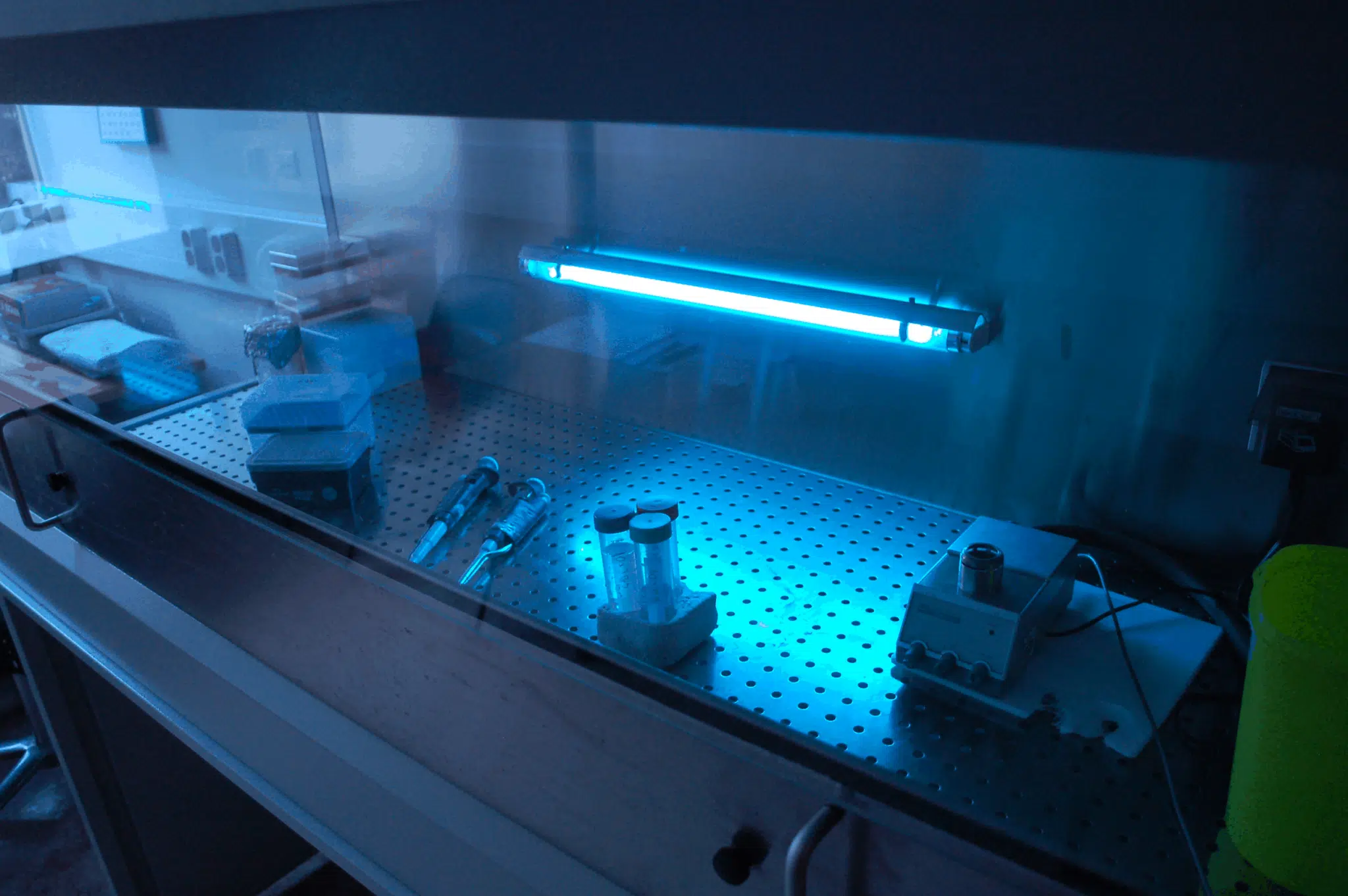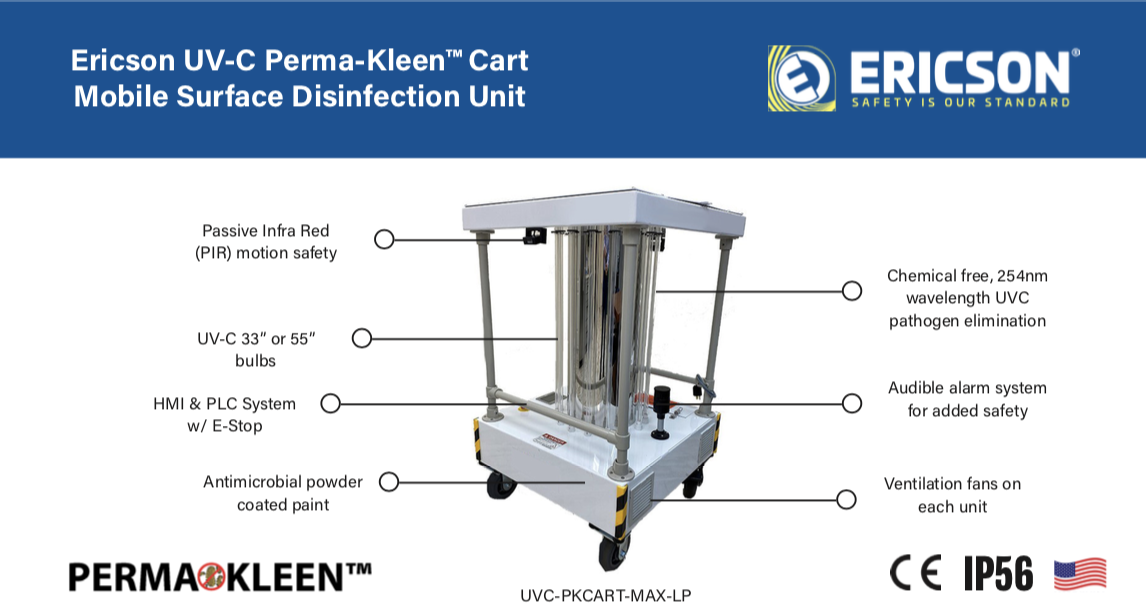Revealing the Advantages of UV Disinfection: Ensuring Tidy and Sanitized Rooms
While traditional cleansing approaches have long been counted upon, developments in technology have presented an ingenious remedy that makes sure clean and disinfected areas: UV sanitation. Additionally, we will certainly delve into the safety considerations that need to be taken into account when carrying out UV sanitation. Prepare to uncover a new dimension of tidiness and find the untapped potential of UV sanitation.

The Scientific Research Behind UV Disinfection
UV disinfection is a medically tried and tested technique that makes use of ultraviolet light to get rid of unsafe microbes from surfaces and water. The science behind UV disinfection lies in the capability of UV-C light to harm the DNA and RNA of bacteria, providing them incapable to duplicate and creating their ultimate death. UV-C light drops within the wavelength series of 200 to 280 nanometers, which is highly efficient in destroying bacteria, viruses, and other pathogens.
When revealed to UV-C light, the genetic product of microorganisms soaks up the energy from the light, leading to the development of thymine dimers. These dimers interrupt the regular duplication and transcription processes of the microorganisms, inhibiting their capacity to duplicate and make it through (uv surface disinfection). The DNA and RNA damage brought on by UV-C light is deadly to the bacteria, making UV disinfection a reliable and reputable technique for eliminating a large range of pathogens
UV disinfection is specifically advantageous in settings where typical chemical anti-bacterials may be inefficient or not practical. It is a non-chemical approach that does not leave any type of residues or dangerous by-products, making it secure for usage in food handling, health care facilities, water therapy plants, and numerous other markets. UV sanitation is ecologically pleasant, as it does not add to the growth of antibiotic-resistant microorganisms or other harmful toxins.
Effectiveness of UV Sanitation on Virus
The efficiency of UV sanitation in removing pathogens has actually been thoroughly researched and verified in countless scientific studies. UV radiation has the capability to suspend a variety of microorganisms, including viruses, fungi, and microorganisms, by harming their DNA or RNA. This stops them from duplicating and triggering infections.
One study published in the American Journal of Infection Control located that UV sanitation worked in decreasing the existence of several drug-resistant bacteria in hospital areas. One more research study carried out by the National Institute for Occupational Safety and security and Health and wellness demonstrated that UV disinfection was able to eliminate 99.9% of the flu infection on surfaces.
UV sanitation has likewise shown assurance in combating the spread of healthcare-associated infections (HAIs) According to a research study published in The Lancet, using UV-C light in addition to standard cleaning methods dramatically reduced the occurrence of HAIs in a health center setup.
Additionally, UV disinfection has confirmed to be effective versus arising virus, such as the extreme intense breathing disorder coronavirus 2 (SARS-CoV-2), which causes COVID-19. A research carried out by the National Arising Transmittable Conditions Laboratories showed that UV-C light can suspend the infection on surface areas within seconds.
Applications of UV Disinfection in Different Setups
With its tested effectiveness in removing microorganisms, UV disinfection has actually found applications in a selection of settings. One of one of the most common areas where UV sanitation is made use of is in medical care centers. UV technology is made use of to disinfect client rooms, running rooms, and various other high-touch surfaces, lowering the risk of healthcare-associated infections. Additionally, UV sanitation is additionally being implemented in food handling plants and dining establishments to make sure the safety and security of food and protect against the spread of foodborne illnesses. UV sanitation check it out is also useful in water treatment plants, where it is made use of to kill unsafe microbes and provide safe alcohol consumption water.
One more important application of UV sanitation impends purification industry. UV air cleansers are made use of in domestic, business, and commercial settings to remove airborne bacteria, viruses, and mold and mildew spores. This technology is particularly valuable in settings where individuals are much more at risk to respiratory infections, such as healthcare facilities, institutions, and office complex.
Additionally, UV disinfection is increasingly being made use of in public transport systems, such as trains and buses, to maintain clean and sterilized rooms for passengers. UV light is employed to decontaminate surface areas and air inside the vehicles, reducing the threat of spreading out infectious diseases.
Advantages of UV Sanitation Over Standard Approaches
In contrast to traditional approaches, UV sanitation uses a variety of distinct benefits that make it a preferable choice in different sectors and setups. One considerable benefit is its efficiency versus a large variety of microorganisms, including viruses, microorganisms, and fungis. Unlike chemical anti-bacterials that may have limited efficacy versus specific virus, UV sanitation is a non-selective procedure that can eliminate or suspend a broad range of dangerous microorganisms.
One more benefit of UV sanitation is its capacity to supply rapid and reliable disinfection. Standard sanitation techniques usually call for longer call times or several steps to attain the desired level of sanitation. In contrast, UV light can give continual and prompt disinfection, reducing downtime and raising performance in numerous applications.
UV sanitation likewise provides a eco pleasant and safe choice to conventional disinfection methods. uv surface disinfection. Unlike chemical agents, UV light does not leave any kind of unsafe residues or by-products, making it appropriate for use in delicate settings such as food processing facilities, healthcare setups, and water therapy plants
Additionally, UV disinfection is an economical option over time. While the upfront financial investment for UV sanitation systems might be greater than conventional methods, the functional prices are typically reduced. UV lamps have a long life expectancy and call for marginal maintenance, resulting in minimized labor and substitute costs.
Security Considerations for UV Disinfection
Thinking about the prospective risks connected with UV disinfection, it is vital to deal with the safety factors to consider associated with executing this modern technology. UV disinfection makes use of ultraviolet light to eliminate or suspend microbes, making it a reliable method for sterilizing different surfaces and items. Nevertheless, it is important to recognize that UV radiation can additionally pose threats to human wellness if correct precaution are not followed.
Firstly, straight exposure to UV radiation can create harm to the skin and eyes. check Long term exposure can lead to sunburn, skin damages, and even an enhanced threat of developing skin cancer cells. It is critical to make certain that UV disinfection systems are properly confined and outfitted with safety and security features such as automatic shut-off mechanisms or motion sensing units to stop accidental exposure.

In addition, proper training and education and learning are vital for those in charge of operating UV sanitation systems. They ought to recognize the possible dangers, comprehend the safety methods, and know how to deal with and maintain the equipment properly.
Final Thought
Finally, UV disinfection offers various benefits in making certain tidy and sterilized spaces. Its efficiency in eliminating virus has actually been proven via clinical visit here study. UV sanitation can be used in numerous setups, consisting of healthcare centers, food handling plants, and water therapy systems. Compared to typical approaches, UV sanitation has benefits such as faster sanitation times, marginal chemical use, and no unsafe results. Security considerations need to be taken into account to avoid possible threats related to UV exposure.
UV sanitation is a scientifically proven technique that uses ultraviolet light to remove damaging microbes from surfaces and water. The DNA and RNA damages triggered by UV-C light is deadly to the bacteria, making UV sanitation a reliable and efficient approach for killing a vast array of pathogens.
An additional benefit of UV disinfection is its ability to supply effective and rapid sanitation. UV disinfection utilizes ultraviolet light to eliminate or inactivate microbes, making it an effective approach for disinfecting numerous surface areas and things. Contrasted to typical approaches, UV disinfection has advantages such as faster disinfection times, minimal chemical use, and no hazardous byproducts.